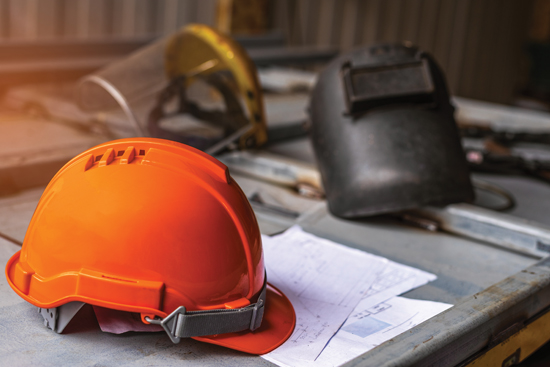
COVID-19 or not, these are your safety tenets
March 31, 2021
By
Christopher Hurley
Hyper-focused on the pandemic? Don't lose sight of all the other health and safety-related 'to-dos' on your list

Many safety pros have heard concerns regarding workforces losing sight of other hazards amongst the COVID storm. This cannot be allowed to happen. (freeman98589/Adobe Stock)
To say COVID-19 has been overwhelming may be the understatement of the year. The world has changed so much since March 2020.
Back then, no one was assigned to check temperatures; pre-screening forms didn’t have a slot in the filing cabinet; and anyone wearing a mask would have looked like a germophobe. Oh, how things have changed.
One thing hasn’t changed, though — health and safety professionals need to ensure all hazards are being managed as aggressively and effectively as COVID-19 in your workplace.
Many safety pros have heard concerns regarding workforces losing sight of other hazards amongst the COVID storm. This cannot be allowed to happen.
Manage your hazards from top to bottom — much like you have the novel coronavirus.
Is your program current?
Although many think that program documentation is simply a home for the dust collection in the office, it serves a much higher purpose!
Programs become your operational safety playbook and allow you to set standards for the different layers of your organizations, as well as clarifying roles and responsibilities.
If we don’t know what to do or who is supposed to be doing it, how can we accomplish anything or measure our success?
Further, if there isn’t a written plan to refer back to from time to time during audits, reassessments and changes to the environment, over time the potential for confusion and eventual deviation from the required process will occur.
On the flip side, a good quality program will become second nature to the operation. Expectations that are worked into orientation, training, performance management, day-to-day floor activities, the management of corrective actions and each level of the organization, will result in a clear understanding as to what responsibilities individuals have and where they land in the process.
A functional program is the backbone of everything you do from a safety
perspective.
Are your communications documented?
“If it’s not written down, it doesn’t exist!” It’s the rally cry of safety pros everywhere and it rings true in every case.
A visit from your local regulator, regardless of the topic, will almost always result in a check-in on your documentation.
Training records, program documentation, standard operating procedures, email communication, toolbox talks, field-level hazard assessments, JHSC minutes — the list goes on and on.
If your due diligence folder is empty and you plan on defending yourself under criticisms with “I told them the right way to do it,” consider yourself a target for further evaluation.
Compile and audit your documentation on a regular basis to spot gaps. Escalate concerns to your team to ensure issues are addressed in a timely manner.
Do you remain nimble?
Few of our operations are stagnant or repetitive in nature.
Employee turnover, new chemicals, modern equipment, or even something as simple as a recommendation from a JHSC, may result in changes to your operation.
In my experience, the vast majority of incidents have a “new” component to them. Be it people, place or thing, a change should always be a pause for the cause to ensure safety-related concerns have been considered.
Is the recent hire adequately trained for the task they’ve been assigned? Have staff been made aware of changes to a procedure? Has a specific procedure been changed to address an identified concern?
All of these situations should be red flags to operation managers, supervisors and safety people alike. Be ready to address issues on the fly and be certain to take the time and do it right.
Even minor changes to the work environment can significantly throw off the routine within your workforce.
Are you relentless?
At the end of the day, be relentless with your safety program and encourage others to do the same at every turn.
If you are in a position where your hazards aren’t being managed at a level considered “reasonable,” start somewhere, and start today.
If you’re a senior manager, get engaged with incident summaries, trends and incoming changes. Check and double check to ensure steps are being taken to manage your hazards.
A supervisor? Widen the scope of your staff meetings to refresh people’s memory on non-COVID-related hazards.
Safety pro? Set up a meeting to discuss that big hazard that needs attention, but no one wants to deal with.
COVID came as an unexpected pile of extra work for many — it’s been time consuming, difficult and hard to predict.
Don’t make the mistake of allowing COVID-19 to let you lose sight of all of the other health and safety-related “to-dos” on your list.
Christopher Hurley, CRSP, is the founder of Safety Services Canada in Caledonia, Ont.